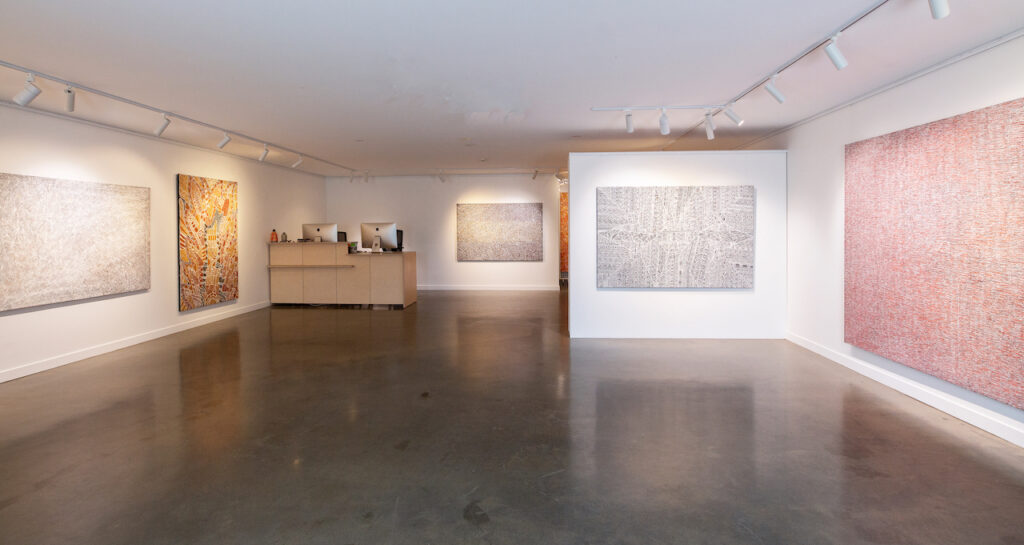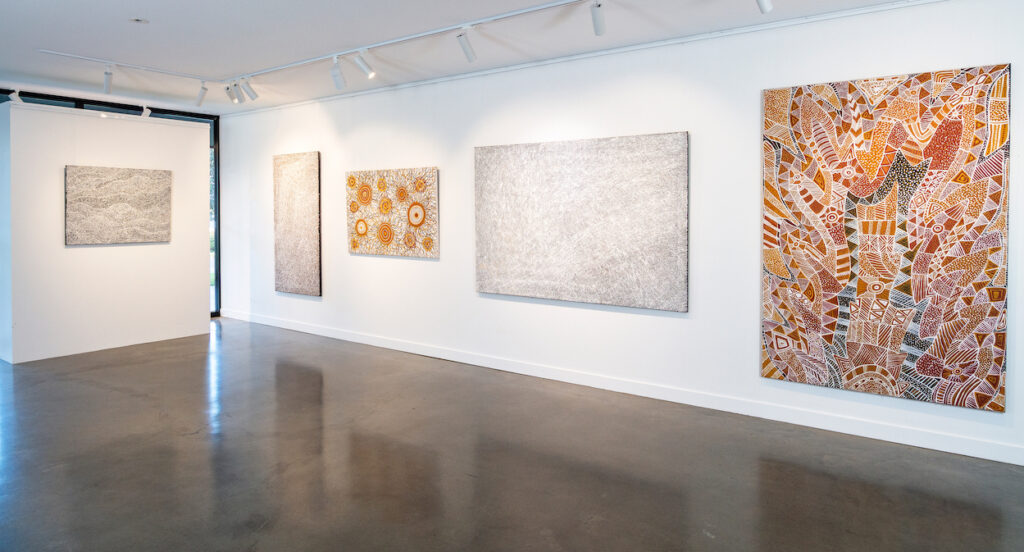
Almost a decade has passed since I visited Munupi Arts and interviewed the most senior elder of Melville Island, the late artist, knowledge holder and great story teller, Justin Puruntatameri: click below to read
My research was part of a State Library of Victoria Creative Fellowship on the Australian colonial frontier and Indigenous resistance. I was extremely fortunate to be able to interview Puruntatameri about the extensive Tiwi resistance at nearby Fort Dundas (Punata), the first British settlement in the Northern Territory.
I found him waiting for me one morning at his spot at the back of the art centre, surrounded by his children and grandchildren. While we spoke, they listened attentively. He was a great teacher, a man of much knowledge. His extensive knowledge of local flora and fauna had been published, he had been featured in The Australian newspaper as the most senior traditional leader in the small Melville Island community of Pirlangimpi, a great new artist drawing comparison to Cy Twombly and Jasper Johns, a ‘distinct’ voice of the old Tiwi: he was estimated to be the most respected ‘culture man’ on both the Tiwi Islands.
Puruntatameri was born at Kadipuwu, next to the miscalculated site where the British would build their short-lived fort. His knowledge of the fort, which lasted from 1824-9, was extensive and he told me of events and features not previously documented.
Together with Munupi staff we walked around the old fort and trenches, commenting that the British would think trenches would be any use against the Tiwi spears. Puruntatameri showed me the two tutini he had made, those famous sculpture headstones made in the final stage of the pukumani ceremony, for the doctor and officer who had been killed by the Tiwi as retribution for the British capture of their warrior Tambu, an act of war.
I asked him why he had made these beautiful works for outsiders who had settled on his people’s land in such a brutal way. ‘I felt sorry for them,’ he said ‘having no headstone.’
This is revealing of the Tiwi’s generosity and nature, as it is of their use of art to express the deep cycles of life; birth, creation, death, and to communicate with each other and with outsiders.

In a subsequent catalogue essay for an exhibition of Munupi Arts held at Artitja Fine Art in South Fremantle, I wrote of the ‘sophisticated geometric design and meditative mark making, a balanced fusion of contemporary adaptation and classical tradition, and the strength of generations of culturally significant families which underlie Munupi Arts.’
The art centre had, I noted, ‘in recent years blossomed into a new life brought about through the art practice of older masters, bringing a renewed energy and traditional vigour to the art.’
This continues in the contemporary art movement today: in paintings by Munupi foundational artist Thecla Bernadette Puruntatameri, mid-generation Delores Tipuamantumirri, and the new generation artists Alison Puruntatameri and Karina Coombes.
Justin Puruntatameri passed away just several months after I visited and interviewed him. His passing left a great gap in the Tiwi world and the Australian arts.

It is wonderful to see his legacy continuing on through the work of Munupi artists and his grandchildren, represented in this exhibition, of which I believe he would have been very proud. It continues a great addition to the magnificent cultural lexicon that is the art of Munupi Arts.
Emily McCulloch Childs, 2023
22 September-10 October
Everywhen Artspace